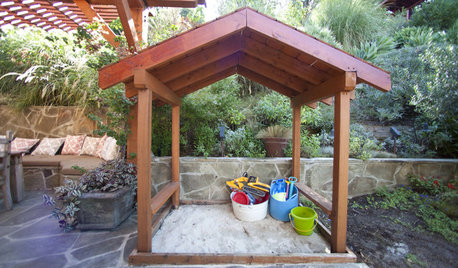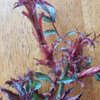Thoughts On Powdery Mildew
henryinct
9 years ago
Related Stories

UPHOLSTERYFabric Focus: There's Nothing Quite Like Linen
Classic, understated, durable and mildew-resistant, linen is a casual fabric fit for any home
Full Story
MONTHLY HOME CHECKLISTSAugust Checklist for a Smooth-Running Home
Sniff out mildew, ramp up home security and get down to other tasks before summer is over and out
Full Story
GARDENING AND LANDSCAPINGBreezy and Bug-Free Modern Porches
Screening keeps pests out of these diverse porches across the U.S., while thoughtful designs keep them visually appealing
Full Story
GARDENING GUIDESGreat Design Plant: Rosa Banksiae a Low-Maintenance Beauty
This thornless, disease- and insect-resistant rose brings showers of white or yellow flowers to the spring garden
Full Story
KIDS’ SPACESSift Through 8 Stylish Sandboxes
These sandy playspaces hold high appeal for kids but are sophisticated enough for grown-up landscapes
Full Story
GARDENING GUIDESNew Ways to Think About All That Mulch in the Garden
Before you go making a mountain out of a mulch hill, learn the facts about what your plants and soil really want
Full Story
HOUSEKEEPINGHow to Clean a Glass Shower Door
See which tools and methods will keep those glass shower walls and doors sparkling clean
Full Story
FLOORSWill Cork Float for Your Bathroom Floor?
Get the facts on advantages, disadvantages, costs and installation to see if a cork bathroom floor is right for you
Full Story
BATHROOM DESIGNWater Damage Spawns a Space-Saving Bathroom Remodel
A game of inches saved this small New York City bathroom from becoming too cramped and limited
Full Story
PRODUCT PICKSGuest Picks: 20 Fun Ways to Store Bath Toys
Keep bathroom clutter in check with kid-friendly containers, pouches and shelves for bath-time playthings
Full StoryMore Discussions








seil zone 6b MI
ordphien
Related Professionals
Ferndale Landscape Architects & Landscape Designers · Grand Haven Landscape Architects & Landscape Designers · Leawood Landscape Architects & Landscape Designers · Norwood Landscape Contractors · Amesbury Landscape Contractors · Boca Raton Landscape Contractors · Ellensburg Landscape Contractors · La Mirada Landscape Contractors · Little Ferry Landscape Contractors · McLean Landscape Contractors · Mequon Landscape Contractors · Saint John Landscape Contractors · Wickliffe Landscape Contractors · Four Corners Landscape Contractors · Goldenrod Landscape Contractorssocks
roseseek
nikthegreek
bayarea_girl_z10a_ca
roseseek
bayarea_girl_z10a_ca
deervssteve
henryinctOriginal Author
deervssteve
roseseek